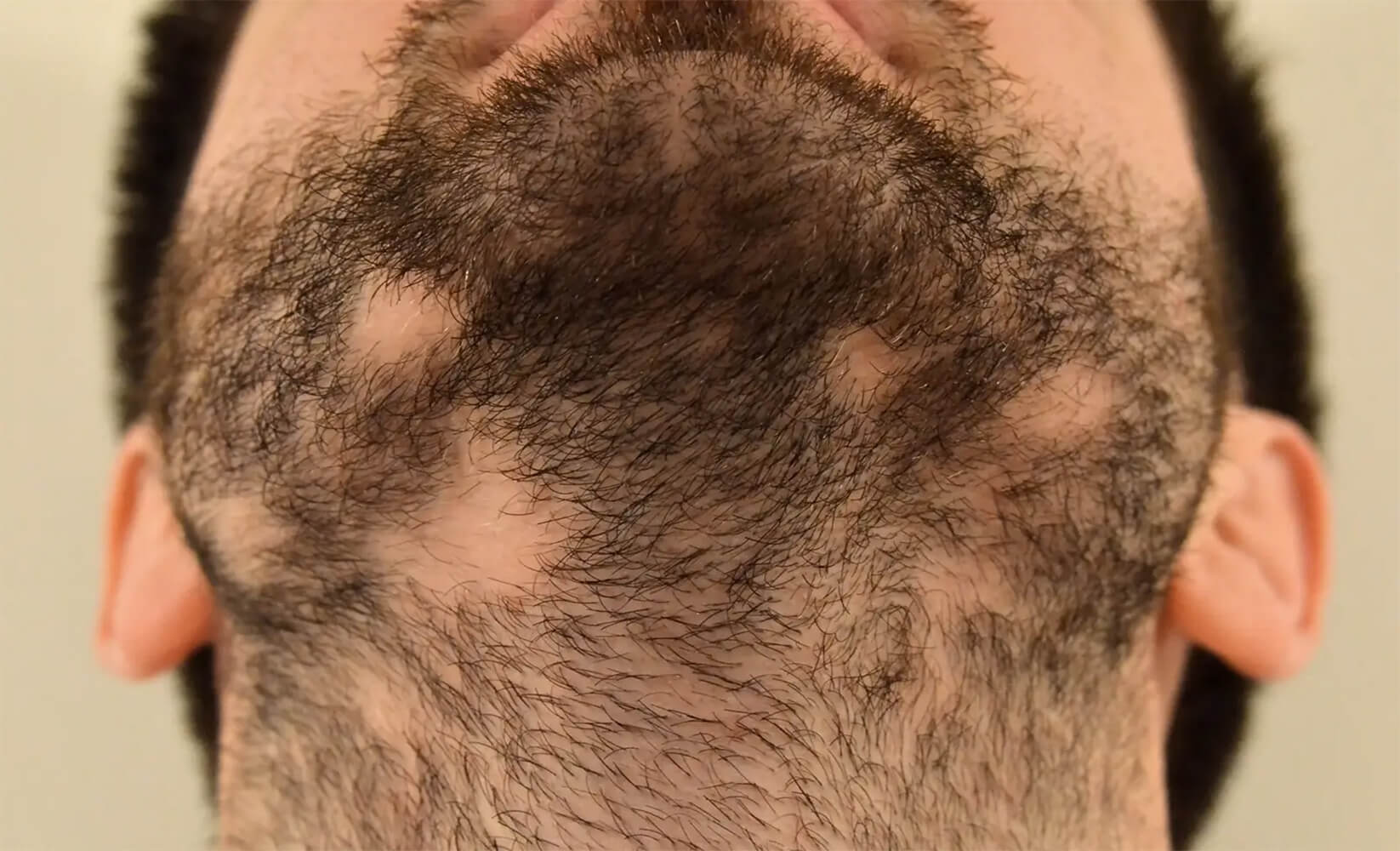Alopecia Barbae: Causes, Diagnosis & Treatment
Hair loss doesn’t only affect the scalp — in some cases, it can impact facial hair as well. One such condition is Alopecia Barbae, a form of alopecia areata that specifically targets the beard area. It leads to patchy hair loss on the face and can be distressing for those who take pride in their beard growth.
Let’s explore the underlying causes of alopecia barbae, how it is diagnosed, and what treatment options are available.

What Is Alopecia Barbae?
Alopecia barbae is an autoimmune condition where the body’s immune system mistakenly attacks healthy hair follicles in the beard area. This results in round or oval bald patches, usually appearing suddenly.
It falls under the broader category of alopecia areata, which can affect any hair-bearing area of the body. While alopecia barbae can occur on its own, it may also be part of more widespread hair loss.
What Causes Alopecia Barbae?
The exact cause of alopecia barbae remains unclear, but it is believed to be an autoimmune reaction. Several factors may contribute to the development of the condition:
1. Genetics
A family history of autoimmune conditions, including alopecia areata, increases your likelihood of developing alopecia barbae.
2. Immune System Dysregulation
In autoimmune disorders, the immune system misidentifies healthy cells — in this case, hair follicles — as foreign and attacks them.
3. Stress
Emotional or physical stress may trigger or exacerbate the condition, although it is rarely the sole cause.
4. Other Autoimmune Disorders
Alopecia barbae is more common in individuals with conditions such as:
Rheumatoid arthritis
Thyroid disease
Lupus
Type 1 diabetes
Symptoms of Alopecia Barbae
The main symptom is the sudden appearance of smooth, round patches in the beard area, typically without pain or itching. Other signs may include:
Redness or inflammation in the affected area
Fine, short “exclamation mark” hairs at the edges of the bald patch
Mild burning or tingling sensation before hair falls out
In some cases, the condition may progress or recur in different beard zones over time.
How Is Alopecia Barbae Diagnosed?
Alopecia barbae is usually diagnosed through clinical evaluation by a dermatologist. The diagnosis may involve:
Visual examination of the beard and scalp
Dermatoscopy (to examine hair follicles and skin surface)
Pull test, to assess the strength of the remaining hair
Blood tests, to rule out underlying autoimmune or thyroid disorders
Skin biopsy, in rare cases, to confirm diagnosis
Since the condition mimics other types of hair loss or fungal infections, accurate diagnosis is key to proper treatment.
Can Alopecia Barbae Be Treated?
There is no permanent cure for alopecia barbae, but the condition can be managed with medical and lifestyle interventions. Many patients experience spontaneous regrowth, although recurrence is possible.
Common Treatment Options:
Topical Corticosteroids
Anti-inflammatory creams or ointments help suppress the immune response locally.Intralesional Steroid Injections
Corticosteroids are injected directly into the bald patches to reduce inflammation and stimulate regrowth.Minoxidil (Rogaine)
Often used for scalp hair loss, minoxidil may also be applied to beard areas to encourage hair regrowth.Immunotherapy
In severe or persistent cases, treatments that modulate the immune system (such as topical diphencyprone) may be used under specialist supervision.Oral Medications
Drugs like corticosteroids or JAK inhibitors (in clinical settings) may be prescribed for more extensive forms of alopecia areata.Supplements and Diet
A nutrient-rich diet and supplements such as biotin, zinc, and vitamin D may support overall hair health, though they are not standalone cures.
Lifestyle and Self-Care Tips
While medical treatments are key, these self-care strategies may support recovery:
Reduce stress through mindfulness, exercise, or therapy
Avoid irritating grooming habits, like harsh shaving or chemicals
Be patient — hair regrowth can take weeks or months
Camouflage with beard fillers or makeup if desired for appearance
When to See a Doctor
Consult a dermatologist if you notice:
Rapid or widespread beard hair loss
Changes in the skin texture or color in affected areas
Hair loss on the scalp, eyebrows, or other areas as well
Family history of autoimmune disorders
Early diagnosis and intervention often lead to better outcomes and minimize psychological distress.
Final Thoughts
Alopecia barbae is a frustrating but manageable condition. With the right medical care, many patients experience full or partial regrowth within several months. Understanding the causes, recognizing symptoms early, and exploring treatment options with a qualified healthcare provider are the best steps toward recovery.
